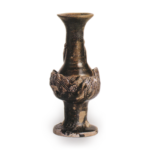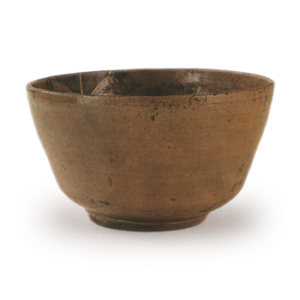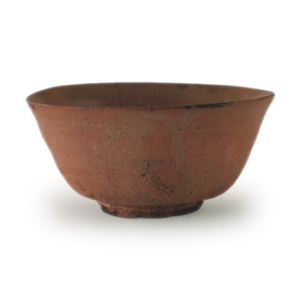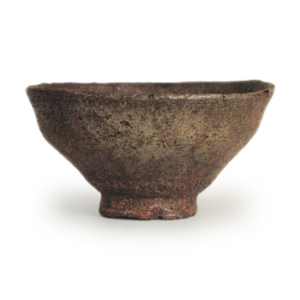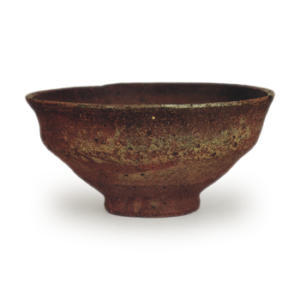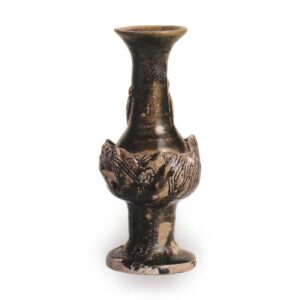
Shichikyoku Kiln, Kitagaoka-cho, Seto City, Aichi Prefecture, Japan
14th century
Height 17.4cm, Bore 5.4cm, Height 6.6cm, Bottom diameter 6.5cm
Decorations by pasting were widely used in Kosedo from the end of the Kamakura period to the Nanbokucho period, and quite a few Buddhist vases were made with lotus flowers pasted onto the body and wrapped around. Although ash glaze is also used, iron glaze is by far the most common. This vase has a yellowish-white base and is water-ground, but it is rather coarsely ground and the jurisdiction is obliquely visible on the surface of the vessel. The lotus petals are pasted on haphazardly, with the tips pressed down with fingers, and the surface is decorated with three lines of incised patterns. The sleeve is blackish brown with a slight bluish tinge, and the extraction is thin, especially on the lower half, with many irregularities in the glaze. The orbital part has small, degenerated double-ear rings, and the date of production is thought to date from the late 14th century.

